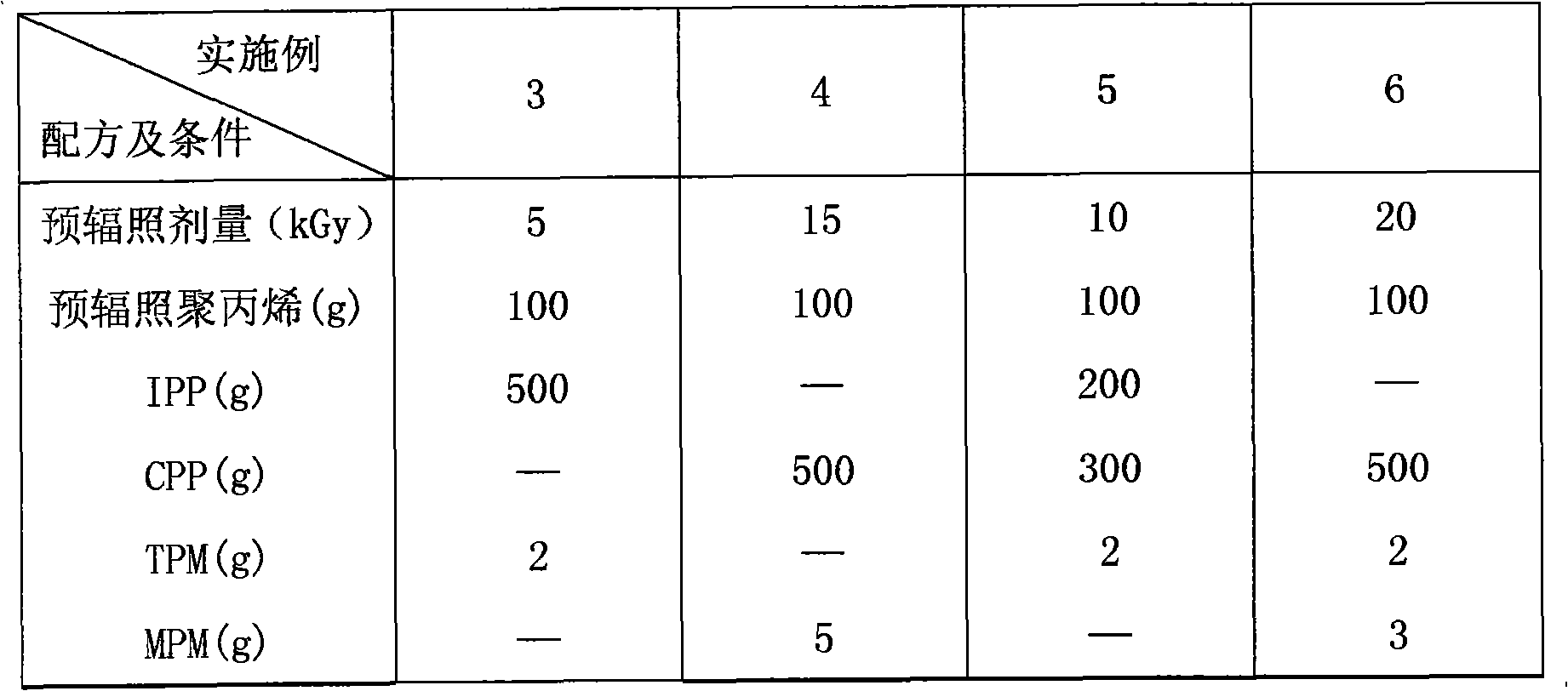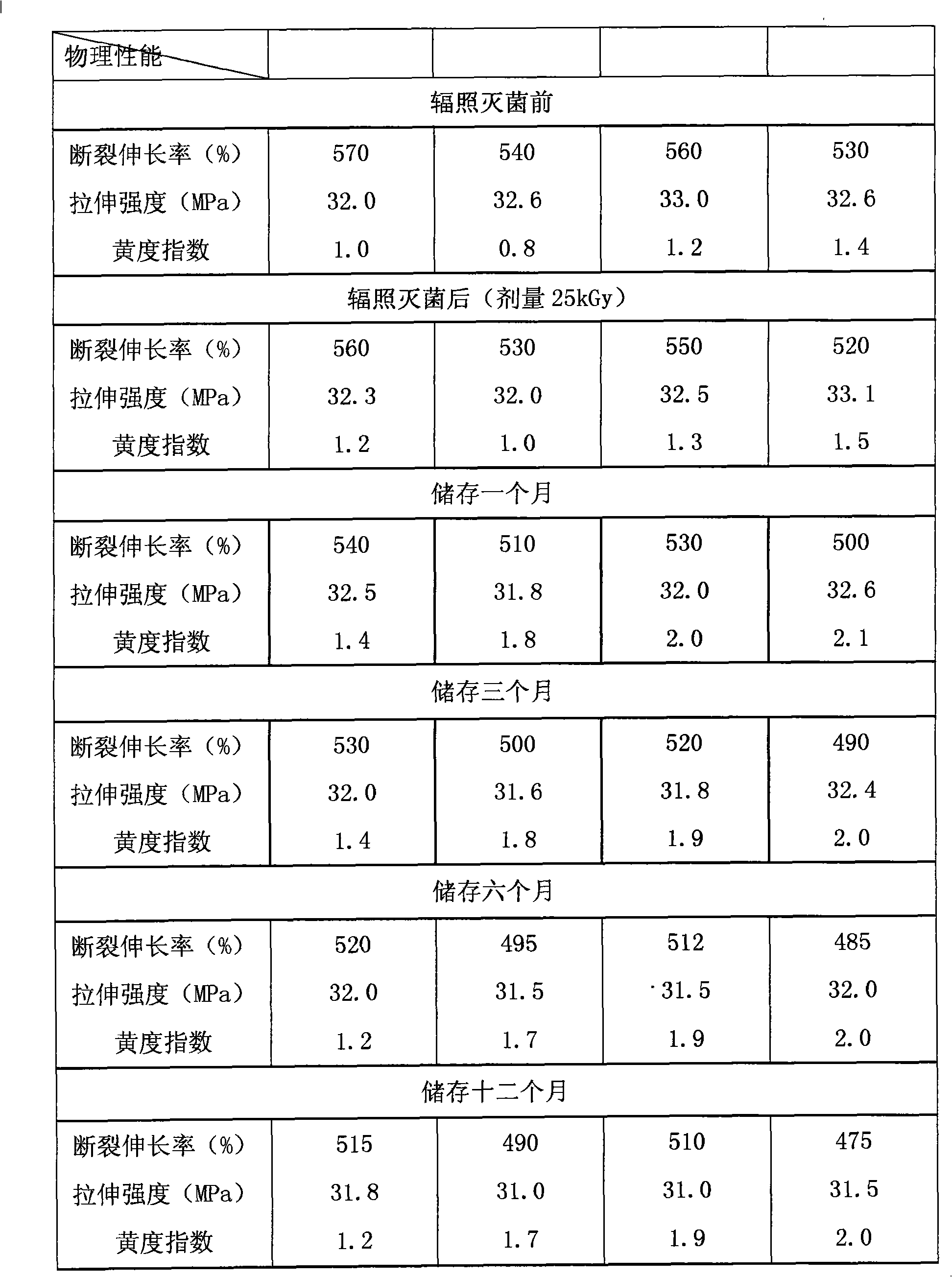Method for preparing radiation aging resistant polypropylenes
An anti-radiation, polypropylene technology, applied in the direction of organic chemistry, can solve the problems of easy volatilization and precipitation environment, uneven dispersion of stabilizers, difficult processing, etc. Precipitation effect
- Summary
- Abstract
- Description
- Claims
- Application Information
AI Technical Summary
Problems solved by technology
Method used
Image
Examples
Embodiment 1
[0026] Add 0.12 mol of maleic anhydride, 0.1 mol of 2,2,6,6-tetramethyl-4-piperidinol and 60 ml of toluene into a three-necked flask equipped with a stirrer and a thermometer, and stir mechanically to make it evenly mixed . The temperature was raised to 50° C. for the esterification reaction, and the reaction was completed after stirring at this temperature for 30 minutes. Pour the reactant into a mixture of chloroform and saturated saline, the volume ratio of chloroform to saturated saline is 3:1, then move the chloroform and saturated saline solution containing the reactant to a separatory funnel for shaking to separate layers, Unreacted maleic anhydride was removed. Chloroform and toluene were distilled off from the lower layer under reduced pressure accordingly. The white solid obtained was mono(2,2,6,6-tetramethyl-4-piperidinolyl)maleate (TPM).
Embodiment 2
[0028] Add 0.15mol of maleic anhydride, 0.1mol of 1,2,2,6,6-pentamethyl-4-piperidinol and 80ml of xylene into a three-necked flask equipped with a stirrer and a thermometer, and stir mechanically to make it well mixed. The temperature was raised to 60° C. for the esterification reaction, and the reaction was completed after stirring at this temperature for 60 minutes. Pour the reactant into a mixture of chloroform and saturated saline, the volume ratio of chloroform to saturated saline is 2.5:1, then move the chloroform and saturated saline solution containing the reactant to a separatory funnel for shaking to separate layers, Unreacted maleic anhydride was removed. Chloroform and xylene were distilled off from the lower layer under reduced pressure accordingly. The white solid obtained was mono(1,2,2,6,6-pentamethyl-4-piperidinolyl)maleate (MPM).
Embodiment 3-6
[0030] The electron accelerator was used to pre-irradiate homopolypropylene, and the irradiation dose was listed in Table 1 to prepare pre-irradiated polypropylene with macromolecular peroxide.
[0031] One or both of homopolypropylene and ethylene-propylene random copolymer, reactive hindered amine stabilizer mono(2,2,6,6-tetramethyl-4-piperidinyl) cis-butyl One or both of alkene ester (TPM), mono(1,2,2,6,6-pentamethyl-4-piperidinyl) maleate (MPM), pre-radiation Adding polypropylene into a twin-screw extruder to graft the reactive hindered amine stabilizer onto the molecular chain of polypropylene to prepare the anti-radiation aging polypropylene resin. The reaction extrusion grafting temperature is 200° C., the screw speed is 80 rpm, and the material residence time is 3 minutes. The ratio of anti-radiation aging polypropylene material is shown in Table 1. The iPP used had a melt index of 2.0 g / 10 min and the cPP used had a melt index of 3.0 g / 10 min. An electron accelerat...
PUM
| Property | Measurement | Unit |
|---|---|---|
| melt flow index | aaaaa | aaaaa |
| melt flow index | aaaaa | aaaaa |
| melt flow index | aaaaa | aaaaa |
Abstract
Description
Claims
Application Information
 Login to View More
Login to View More - Generate Ideas
- Intellectual Property
- Life Sciences
- Materials
- Tech Scout
- Unparalleled Data Quality
- Higher Quality Content
- 60% Fewer Hallucinations
Browse by: Latest US Patents, China's latest patents, Technical Efficacy Thesaurus, Application Domain, Technology Topic, Popular Technical Reports.
© 2025 PatSnap. All rights reserved.Legal|Privacy policy|Modern Slavery Act Transparency Statement|Sitemap|About US| Contact US: help@patsnap.com



